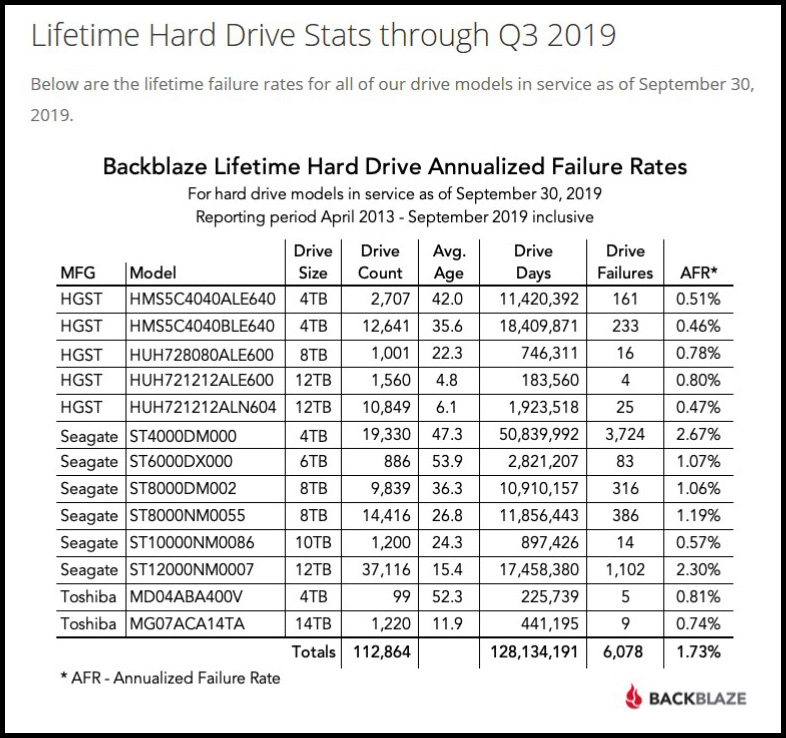
One of the ways to answer that question is to look at hard drive failure rates from a company that uses over 100,000 hard drives.
“As of September 30, 2019, Backblaze had 115,151 spinning hard drives spread across four data centers on two continents.” That is a lot of hard drives. Backblaze periodically provides drive failures stats for all the drives they use. You can see the stats above from their fall 2019 report. As a group, HGST drives have the lowest annualized failure rate. More information is at the first article linked below.
In terms of capacity, the sweet spot for hard drives right now is around 4 TB. If you get a hard drive with more capacity than that, the failure rate goes up.
Buying a highly reliable hard drive doesn’t guarantee it won’t fail. Any drive could fail. But you can cut down the odds by buying a hard drive from a company with a good track record.
I just bought a new internal hard drive. Because of these stats I bought a 4TB HGST drive. I even picked a model number with a low AFR from the above chart.
And of course whatever hard drive you buy should be backed up to at least one other drive and preferably more than one drive.
If you want to store data in the cloud, Backblaze is a good option. Unlimited backup of one personal Mac or PC (and attached external drives) is $6 per month, $60 per year, or $110 for two years. However, the experts I trust say you should never trust the cloud as your only backup option. You should have your own physical hard drives as your primary backup option.
Links
Backblaze Hard Drive Stats Q3 2019
Backblaze Hard Drive Data and Stats (articles going back to 2013)
Backblaze – personal and business cloud storage
The 6 Most Reliable Hard Drives According to Server Companies (the information in this article is from an older Backblaze report)
Â
